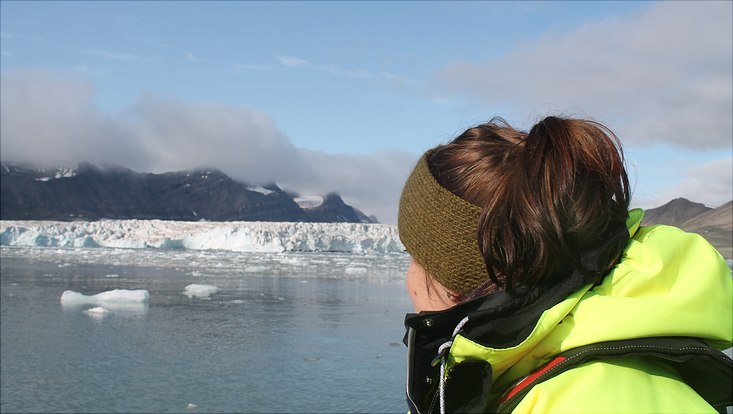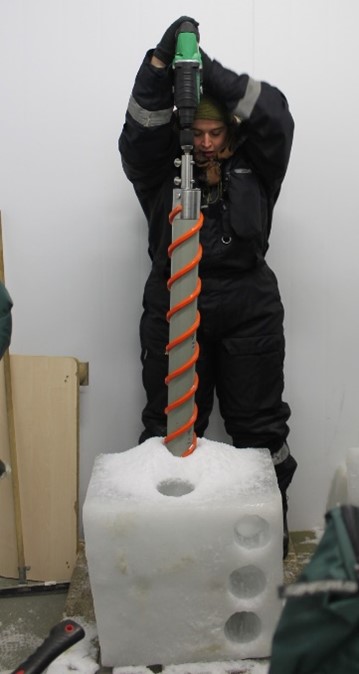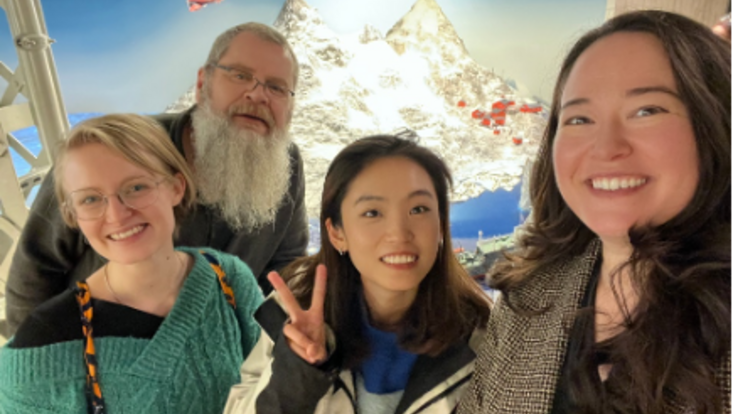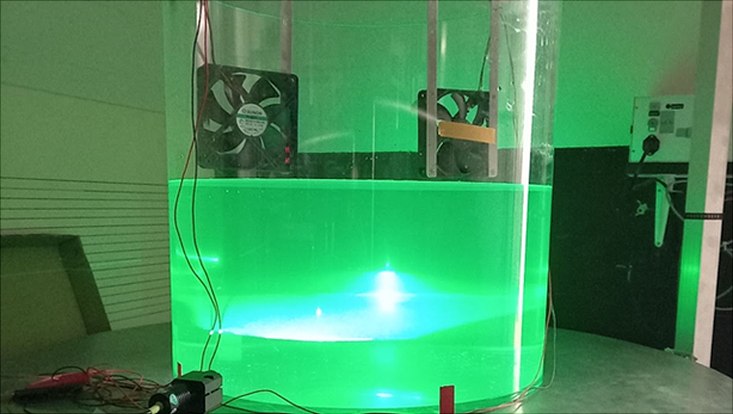A summer with underwater robots and Arctic glaciers
17 March 2022, by Lena Nicola

Photo: Lena Nicola
Last year, while Europe was tanning in the sun and experiencing its warmest summer on record, I was able to escape the heat and spend 5 weeks on Svalbard! In my course Arctic Measurement Methods and Technology at the University Centre in Svalbard (UNIS), I got to try out underwater robots mapping the seafloor and conduct experiments with samples at -18°C to test thermal and mechanical properties of sea ice.
Wait, wait, wait - underwater robots? Experiments with sea ice? Thermal and mechanical properties? Let’s start at the beginning!
I am studying in the master's program in Integrated Climate System Sciences at Universität Hamburg and discovered my passion for Earth’s coldest regions several years ago. It is more important than ever to understand how Earth's ice masses will change in the future and how they interact with other components in the global climate system. To gain hands-on experience and study the glaciers and ice up close, I took a specialized course at the University Centre in Svalbard, or UNIS, in August 2021. UNIS is based in Longyearbyen, the largest settlement of the Svalbard archipelago, located at about 78°N in the middle of the Norwegian Arctic.

The course was structured in three modules. The first module was about sea ice and icebergs. In the lectures we learned about ice formation and growth, icebergs sources and properties, sea-ice ridges, and sea-ice drift in the ocean. We were able to also conduct hands-on experiments with sea-ice samples. UNIS has several cold-laboratories which you can cool down to a desired temperature to create good working conditions to handle ice. In a large tank, we observed the freezing of seawater and through drilling and thin-sectioning of already existing sea-ice samples we could examine more closely the (crystalline) structure of ice. We could, for example, identify brine pockets that had formed in the ice, in which salt normally accumulates during the freezing of water around it.
During the following week, we focused on Arctic shipping and transport. We learned about the challenges that ice conditions in the Northern Hemisphere entail and were taught how to interpret ice charts, calculate ice loads on ships and generally plan a transport operation, e.g. for supplying a research station by boat.
In the last module we learned all about autonomous sensors and sensor platforms including underwater vehicles. “Diving” into the principles for planning marine operations, we were asked to plan a fictious floating wind turbine park outside Longyearbyen. In four days of fieldwork, we got to know the before-mentioned underwater “robots”, that could be potentially used for installing and maintaining wind turbines in the Arctic environment. We were able to use three LAUVs, light autonomous underwater vehicles, from the Applied Underwater Robotics Laboratory from the NTNU University in Trondheim. These torpedo-shaped robots can be programmed to, for example, analyse temperature, salinity or light transmission in the water column, or map the seafloor using a side-scan sonar. With the latter we could, for instance, identify an old shipwreck in Tryghamna. With the help of a blueye® ROV (= remotely operated vehicle), we could explore the seafloor further. Using a gaming controller, we could navigate the small vehicles and have a look on the old shipwreck.
During lunch breaks while out in the field or through private tours by boat, we were able to observe the amazing glaciers surrounding Longyearbyen. We also had the chance to see polar foxes and even polar bears – of course with a safe distance! In the end, we had a written exam in which we had to, for example, explain relevant concepts of the three modules. After the exam, we celebrated the end of the course by going to the local brewery (the northern-most craft brewery, Svalbard Bryggeri).
All in all, I am more than happy that, despite the global pandemic, it was possible to travel to Svalbard and participate in a course there. UNIS creates unique opportunities for students to participate in high quality and hands-on courses. If you want to learn more about the offered courses, check out https://www.unis.no/. I am also very grateful for the financial support that I have received through a Hamburglobal scholarship for my stay.
About the author
Lena is a master student and member of the sea-ice group at the Institute of Oceanography at Universität Hamburg. She has just finished her master thesis on Antarctic precipitation and temperature and plans to start a PhD on Antarctic Ice Dynamics at the Potsdam Institute for Climate Impact Research in early summer this year.
Twitter: @lena_climate






